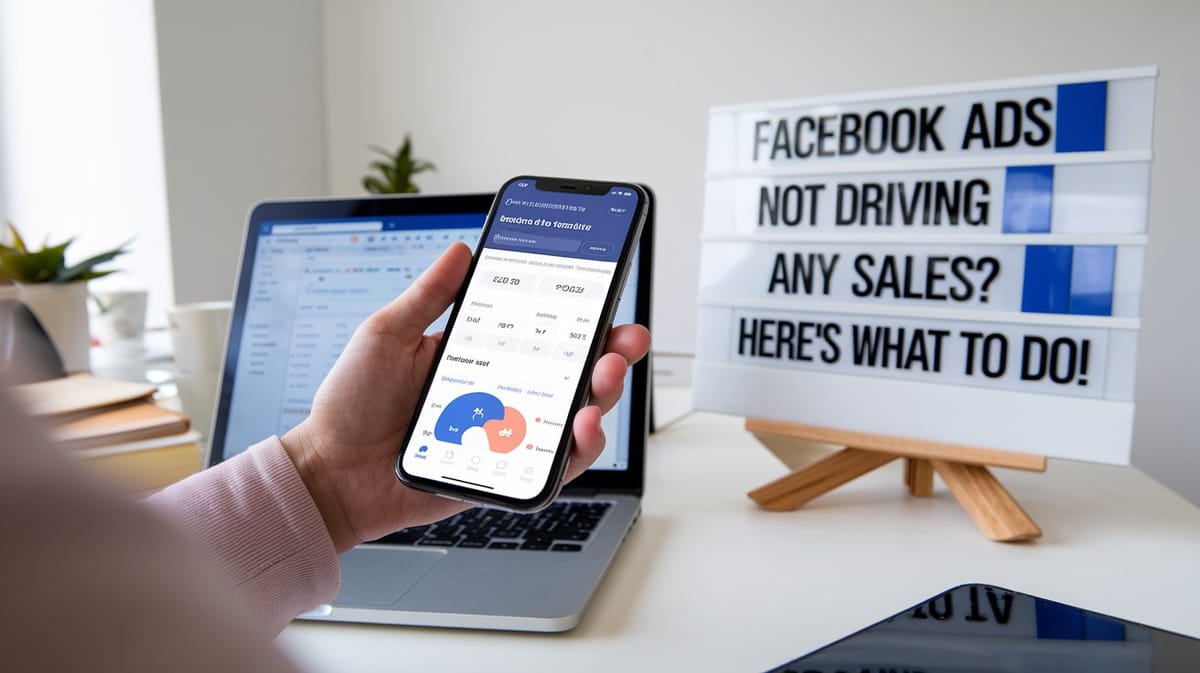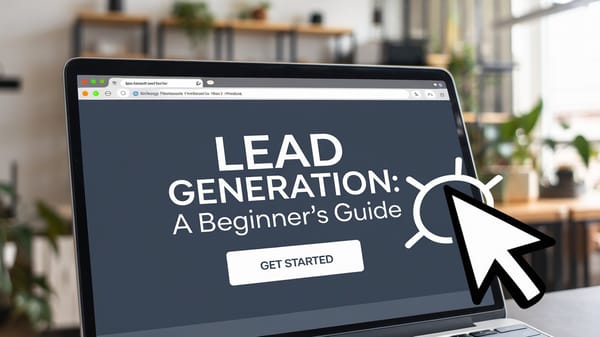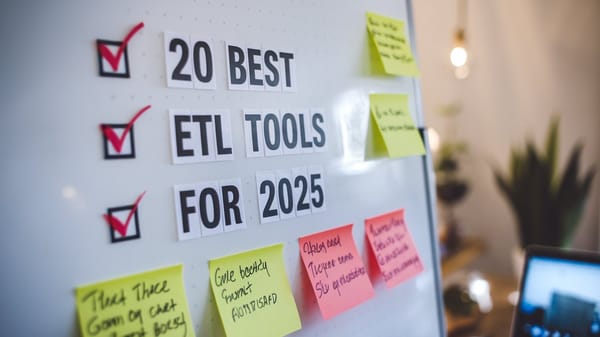Facebook Ads Not Driving Any Sales? Here's What To Do!

In the ever-evolving landscape of digital marketing, Facebook remains a pivotal platform for businesses aiming to enhance their online presence and drive sales. However, despite its vast user base and sophisticated advertising tools, many businesses encounter challenges in converting Facebook ad engagements into actual sales. This report delves into the common issues faced by businesses when their Facebook ads fail to generate sales and provides actionable strategies to overcome these hurdles.
Facebook offers a plethora of advertising options, from Facebook Shops that allow businesses to create an online store directly on the platform, to advanced targeting features using tools like Meta Pixel. Yet, even with these resources, businesses often struggle to stand out amidst the sea of organic and paid content. The competition is fierce, and the need to optimize both paid and organic campaigns is more critical than ever.
One of the key strategies to enhance Facebook ad performance is adopting a full-funnel approach. This involves creating campaigns that target each stage of the customer journey, from awareness to conversion. As highlighted by experts, a single ad is rarely sufficient to achieve desired conversion rates or return on ad spend (ROAS). Instead, a comprehensive strategy that includes social listening, audience segmentation, and iterative ad optimization is essential.
You can also visit Oncely.com to find more Top Trending AI Tools. Oncely partners with software developers and companies to present exclusive deals on their products. One unique aspect of Oncely is its “Lifetime Access” feature, where customers can purchase a product once and gain ongoing access to it without any recurring fees. Oncely also provides a 60-day money-back guarantee on most purchases, allowing customers to try out the products and services risk-free.
Oncely are hunting for the most fantastic AI & Software lifetime deals like the ones below or their alternatives:

Table of Contents
- Optimizing Facebook Ads for Better Sales Conversion
- Understanding the Importance of Account Structure
- Targeting the Right Audience
- Enhancing Ad Relevance and Engagement
- Implementing a Full-Funnel Strategy
- Monitoring and Adjusting Budget Allocation
- Utilizing Automated Reporting Tools
- Testing and Iteration
- Leveraging Time Scheduling
- Conclusion
- Leveraging Facebook Shops and Social Commerce Features
- Integrating Facebook Shops for Enhanced Sales
- Utilizing Social Commerce Features
- Enhancing Customer Engagement with Live Shopping
- Implementing In-App Checkout for Seamless Transactions
- Leveraging User-Generated Content for Authenticity
- Conclusion
- Developing a Full-Funnel Facebook Advertising Strategy
- Understanding the Full-Funnel Approach
- Awareness Stage
- Consideration Stage
- Conversion Stage
- Retargeting and Retention
- Measuring and Optimizing Performance
- Budget Allocation Across the Funnel
- Understanding the Full-Funnel Approach
Optimizing Facebook Ads for Better Sales Conversion
Understanding the Importance of Account Structure
A well-organized account structure is fundamental to optimizing Facebook Ads for better sales conversion. According to WordStream, perfecting your account structure is not merely an optimization tactic but a necessity for success. This involves organizing campaigns, ad sets, and ads in a way that aligns with your business goals and target audience. A clear structure allows for more precise targeting and easier performance analysis, which can lead to improved conversion rates.
Targeting the Right Audience
One of the most common reasons Facebook Ads fail to drive sales is poor targeting. As highlighted by Mayple, if your ads are not reaching the right audience, they will not be effective. To optimize targeting, it is crucial to define the correct demographics, interests, and behaviors of your potential customers. Utilizing Facebook's advanced targeting options, such as Lookalike Audiences and Custom Audiences, can help ensure your ads are seen by users who are more likely to convert.
Enhancing Ad Relevance and Engagement
Ad relevance is a critical factor in driving sales conversions. Facebook's ad relevance diagnostics provide insights into how your ads are perceived by your audience. According to HawkSEM, improving ad relevance involves testing different ad creatives, headlines, and calls-to-action to see what resonates best with your audience. Regularly updating ad creatives can also prevent ad fatigue, keeping your audience engaged and more likely to convert.
Implementing a Full-Funnel Strategy
A full-funnel strategy is essential for guiding potential customers through the buying process. As noted by WordStream, Facebook offers objectives across the funnel, from awareness to conversion. By aligning your ad campaigns with these objectives, you can create a seamless customer journey that increases the likelihood of conversion. This involves creating different ad sets for each stage of the funnel, ensuring that your messaging is relevant to the user's current stage in the buying process.
Monitoring and Adjusting Budget Allocation
Effective budget management is crucial for optimizing Facebook Ads. According to Mayple, spending more on your daily budget initially can provide a boost of data, allowing for quicker optimization. However, it is important to continuously monitor performance and adjust budgets based on the results. Allocating more budget to high-performing ad sets and reducing spend on underperforming ones can help maximize return on ad spend (ROAS).
Utilizing Automated Reporting Tools
Automated reporting tools can significantly enhance the optimization process by providing detailed insights into ad performance. As suggested by Coupler.io, tools like Coupler.io can automate Facebook Ads reporting, allowing you to create meaningful reports that highlight key performance metrics. These insights can help identify areas for improvement and inform strategic decisions to boost sales conversion.
Testing and Iteration
Continuous testing and iteration are key to successful Facebook Ads optimization. As emphasized by HawkSEM, optimization is not a quick fix but an iterative process. Regularly testing different ad elements, such as images, copy, and targeting options, can help identify what works best for your audience. By analyzing the results and making data-driven adjustments, you can gradually improve ad performance and increase sales conversion rates.
Leveraging Time Scheduling
Scheduling your ads to run at optimal times can enhance their effectiveness. According to Mayple, putting your ads on a time schedule ensures they are shown when your target audience is most active, maximizing engagement and conversion potential. Analyzing past performance data can help determine the best times to run your ads, allowing for more efficient budget use and improved ROI.
Conclusion
Optimizing Facebook Ads for better sales conversion requires a strategic approach that encompasses account structure, audience targeting, ad relevance, budget management, and continuous testing. By implementing these best practices and leveraging available tools and insights, businesses can enhance their ad performance and drive higher sales conversion rates.
Leveraging Facebook Shops and Social Commerce Features
Integrating Facebook Shops for Enhanced Sales
Facebook Shops offer a seamless way for businesses to create an online storefront accessible through both Facebook and Instagram. This feature is particularly beneficial for businesses struggling with sales conversion through traditional Facebook Ads. By setting up a Facebook Shop, businesses can provide a more integrated shopping experience, allowing users to browse, save, and purchase products directly within the platform. According to Facebook, businesses that utilize Shops can see a significant increase in engagement and conversion rates, as the shopping process is streamlined and user-friendly (Facebook Business).
To maximize the potential of Facebook Shops, businesses should ensure that their product catalog is comprehensive and up-to-date. This includes high-quality images, detailed product descriptions, and accurate pricing. Additionally, leveraging Facebook's dynamic ads can further enhance the shopping experience by automatically showing the most relevant products to potential customers based on their interests and behaviors (Facebook for Business).
Utilizing Social Commerce Features
Social commerce is a growing trend that combines social media and e-commerce, allowing users to discover and purchase products directly through social platforms. Facebook has been at the forefront of this trend, offering features such as shoppable posts, live shopping events, and in-app checkout. These features can significantly boost sales conversion by reducing the friction between product discovery and purchase.
Shoppable posts, for instance, enable businesses to tag products directly in their posts, making it easier for users to learn more about the products and make a purchase without leaving the app. According to a study by eMarketer, social commerce sales in the U.S. are expected to reach $79.64 billion by 2025, highlighting the potential of these features to drive sales (eMarketer).
Enhancing Customer Engagement with Live Shopping
Live shopping is an interactive way to engage with customers and showcase products in real-time. Facebook Live Shopping allows businesses to host live events where they can demonstrate products, answer questions, and offer exclusive deals. This format not only increases engagement but also creates a sense of urgency, encouraging viewers to make immediate purchases.
Businesses can leverage live shopping to build a community around their brand, fostering loyalty and repeat purchases. According to a report by Coresight Research, live shopping is expected to generate $25 billion in sales in the U.S. by 2023, indicating its growing importance in the e-commerce landscape (Coresight Research).
Implementing In-App Checkout for Seamless Transactions
In-app checkout is a feature that allows users to complete their purchases without leaving the Facebook or Instagram app. This feature simplifies the buying process, reducing the likelihood of cart abandonment and increasing conversion rates. By keeping the entire transaction within the app, businesses can provide a more cohesive and secure shopping experience.
Facebook's in-app checkout also supports various payment methods, including credit cards, PayPal, and Facebook Pay, making it convenient for users to complete their purchases. According to a study by Baymard Institute, the average cart abandonment rate is 69.57%, often due to complicated checkout processes. By implementing in-app checkout, businesses can significantly reduce this rate and improve sales conversion (Baymard Institute).
Leveraging User-Generated Content for Authenticity
User-generated content (UGC) is a powerful tool for building trust and authenticity with potential customers. Encouraging customers to share their experiences and reviews on Facebook can enhance brand credibility and influence purchasing decisions. Businesses can feature UGC in their Facebook Shops and ads, showcasing real-life applications of their products.
According to a survey by Stackla, 79% of people say user-generated content highly impacts their purchasing decisions, and 58% of consumers have left an e-commerce store without purchasing because the site didn’t contain customer reviews or photos (Stackla). By integrating UGC into their social commerce strategy, businesses can create a more relatable and trustworthy shopping experience.
Conclusion
By leveraging Facebook Shops and social commerce features, businesses can address the challenge of low sales conversion from Facebook Ads. These tools provide a more integrated and engaging shopping experience, reducing friction and enhancing customer satisfaction. As social commerce continues to grow, businesses that adapt to these trends are likely to see improved sales performance and customer loyalty.
Developing a Full-Funnel Facebook Advertising Strategy
Understanding the Full-Funnel Approach
A full-funnel Facebook advertising strategy is designed to guide potential customers through the entire buying process, from awareness to conversion. This approach is crucial for businesses struggling with Facebook ads that are not driving sales. The full-funnel strategy involves creating tailored content for each stage of the customer journey, ensuring that ads are relevant and engaging at every touchpoint.
Awareness Stage
The awareness stage is the top of the funnel, where the primary goal is to capture the attention of a broad audience. At this stage, businesses should focus on building brand recognition and reaching new potential customers. Facebook's broad targeting options and engaging ad formats, such as video ads and carousel ads, are effective tools for this purpose. According to Facebook's own data, video ads can increase brand awareness by up to 80%.
To optimize the awareness stage, businesses should utilize Facebook's Lookalike Audiences feature, which allows advertisers to reach new people who are similar to their existing customers. This feature can significantly enhance the effectiveness of awareness campaigns by targeting users who are more likely to be interested in the brand.
Consideration Stage
In the consideration stage, the focus shifts to engaging the audience and encouraging them to learn more about the products or services offered. This stage is crucial for nurturing leads and moving them further down the funnel. Facebook offers several ad formats and tools that are particularly effective at this stage, such as lead ads, which allow users to express interest in a product or service without leaving the platform.
Dynamic ads are another powerful tool in the consideration stage. These ads automatically show the right products to people who have expressed interest on your website, in your app, or elsewhere on the internet. According to Facebook's advertising insights, dynamic ads can increase click-through rates by up to 50% compared to static ads.
Conversion Stage
The conversion stage is where potential customers are encouraged to make a purchase. At this stage, the goal is to provide a seamless path to conversion, minimizing any friction that might prevent a sale. Facebook's conversion-optimized ads, such as those using the Conversions objective, are designed to drive actions that are valuable to the business, such as purchases or sign-ups.
To maximize conversions, businesses should implement Facebook Pixel, a piece of code that tracks user interactions on their website. This tool provides valuable insights into customer behavior and allows for more precise retargeting. According to Facebook's Pixel guide, businesses that use Facebook Pixel see an average increase in conversion rates of 20%.
Retargeting and Retention
Retargeting is a critical component of a full-funnel strategy, particularly for re-engaging users who have interacted with the brand but have not yet converted. Facebook's Custom Audiences feature allows businesses to retarget users based on their previous interactions, such as visiting a website or engaging with an ad. This feature is essential for maintaining brand visibility and encouraging repeat interactions.
Retention strategies should also be integrated into the full-funnel approach to ensure long-term customer loyalty. Facebook's engagement ads, such as those promoting exclusive offers or loyalty programs, can help keep existing customers engaged and encourage repeat purchases. According to Facebook's engagement metrics, businesses that focus on retention see a 30% increase in customer lifetime value.
Measuring and Optimizing Performance
A successful full-funnel strategy requires continuous measurement and optimization. Facebook provides a range of analytics tools, such as Facebook Insights and Ads Manager, which offer detailed performance metrics. These tools allow businesses to track key performance indicators (KPIs) such as reach, engagement, and conversion rates.
Regular A/B testing is also essential for optimizing ad performance. By testing different ad creatives, targeting options, and bidding strategies, businesses can identify the most effective combinations for each stage of the funnel. According to Facebook's A/B testing guide, businesses that regularly conduct A/B tests see a 20% improvement in ad performance.
Budget Allocation Across the Funnel
Effective budget allocation is crucial for a full-funnel strategy. Businesses should allocate their budget based on the potential return on investment (ROI) at each stage of the funnel. Typically, a larger portion of the budget should be allocated to the awareness stage to build a broad audience base, with subsequent stages receiving proportionate funding based on their conversion potential.
Facebook's Campaign Budget Optimization (CBO) feature can help automate budget allocation across different ad sets, ensuring that funds are directed towards the highest-performing ads. According to Facebook's CBO insights, businesses using CBO see a 15% increase in overall campaign efficiency.
By implementing a full-funnel Facebook advertising strategy, businesses can address the issue of ads not driving sales by ensuring that each stage of the customer journey is effectively targeted and optimized. This approach not only enhances the likelihood of conversion but also builds long-term customer relationships, ultimately leading to sustained business growth.





